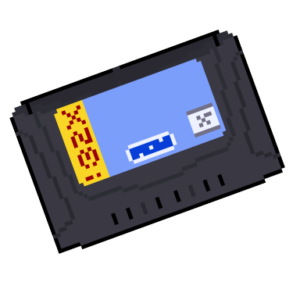32X
Sega
The Sega 32X is an add-on for the Sega Genesis video game console. Codenamed “Project Mars”, the 32X was designed to expand the power of the Genesis and serve as a transitional console into the 32-bit era until the release of the Sega Saturn. Independent of the Genesis, the 32X uses its own ROM cartridges and has its own library of games. The add-on was distributed under the name Super 32X (????32X?) in Japan, Sega Genesis 32X in North America, Sega Mega Drive 32X in the PAL region, and Sega Mega 32X in Brazil.
Unveiled by Sega at June 1994’s Consumer Electronics Show, the 32X was presented as a low-cost option for consumers looking to play 32-bit games. Developed in response to the Atari Jaguar and concerns that the Saturn would not make it to market by the end of 1994, the product was first conceived as an entirely new console. At the suggestion of Sega of America executive Joe Miller and his team, the console was converted into an add-on to the existing Genesis and made more powerful. The final design contained two 32-bit central processing unit chips and a 3D graphics processor. To bring the new add-on to market by its scheduled release date of November 1994, development of the new system and its games were rushed. The console failed to attract third-party video game developers and consumers because of the announcement of the Sega Saturn’s simultaneous release in Japan. Sega’s efforts to rush the 32X to market cut into available time for game development, resulting in a weak library of forty titles that could not fully utilize the add-on’s hardware, including Genesis ports. By the end of 1994, the 32X had sold 665,000 units. After price reductions in 1995, it was discontinued in 1996 as Sega turned its focus to the Saturn.
The 32X is considered a commercial failure. Reception after the add-on’s unveiling and launch was positive, highlighting the low price of the system and power expansion to the Genesis. Later reviews, both contemporary and retrospective, for the 32X have been mostly negative because of its shallow game library, poor market timing and the resulting market fragmentation for the Genesis.

